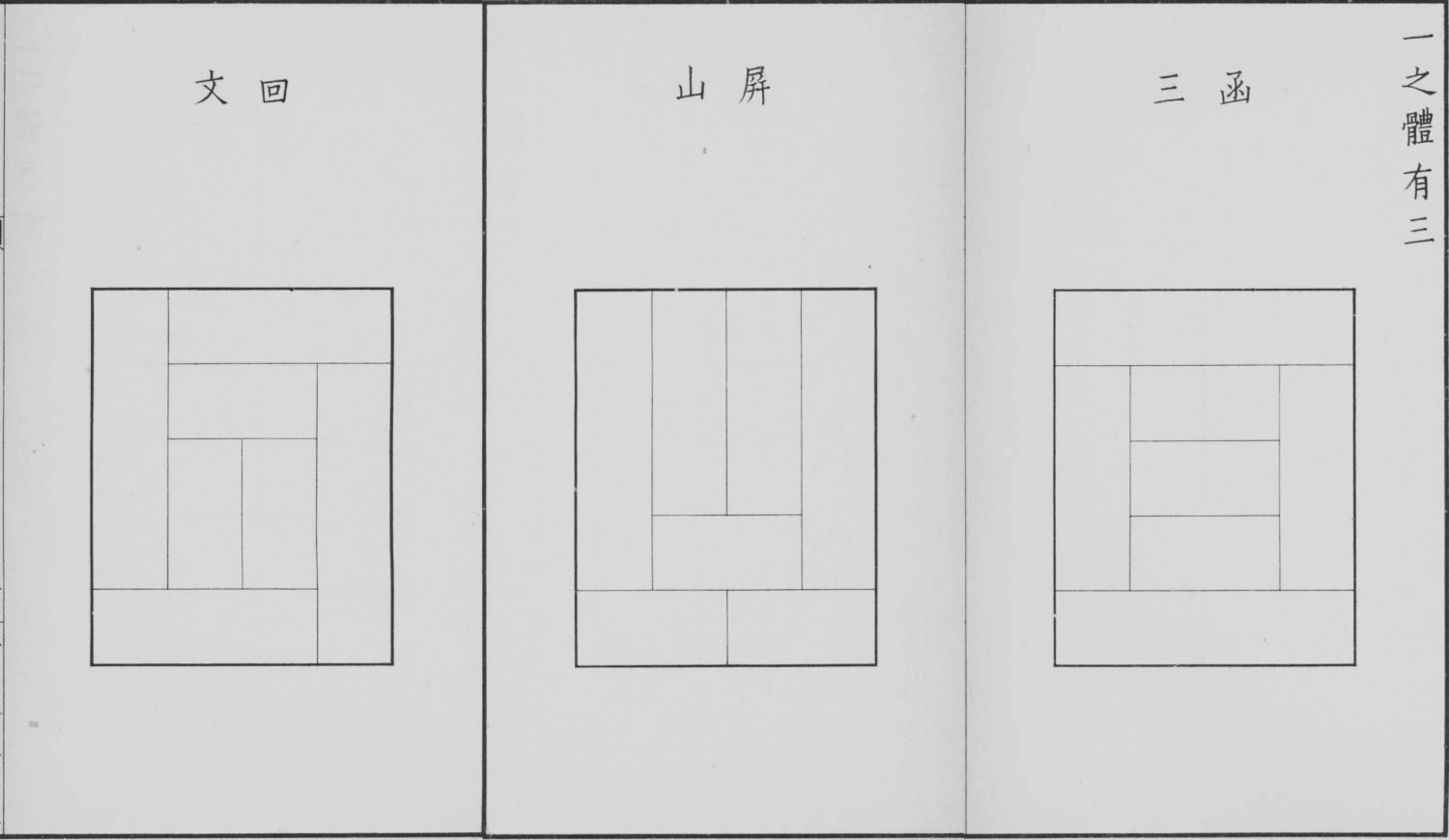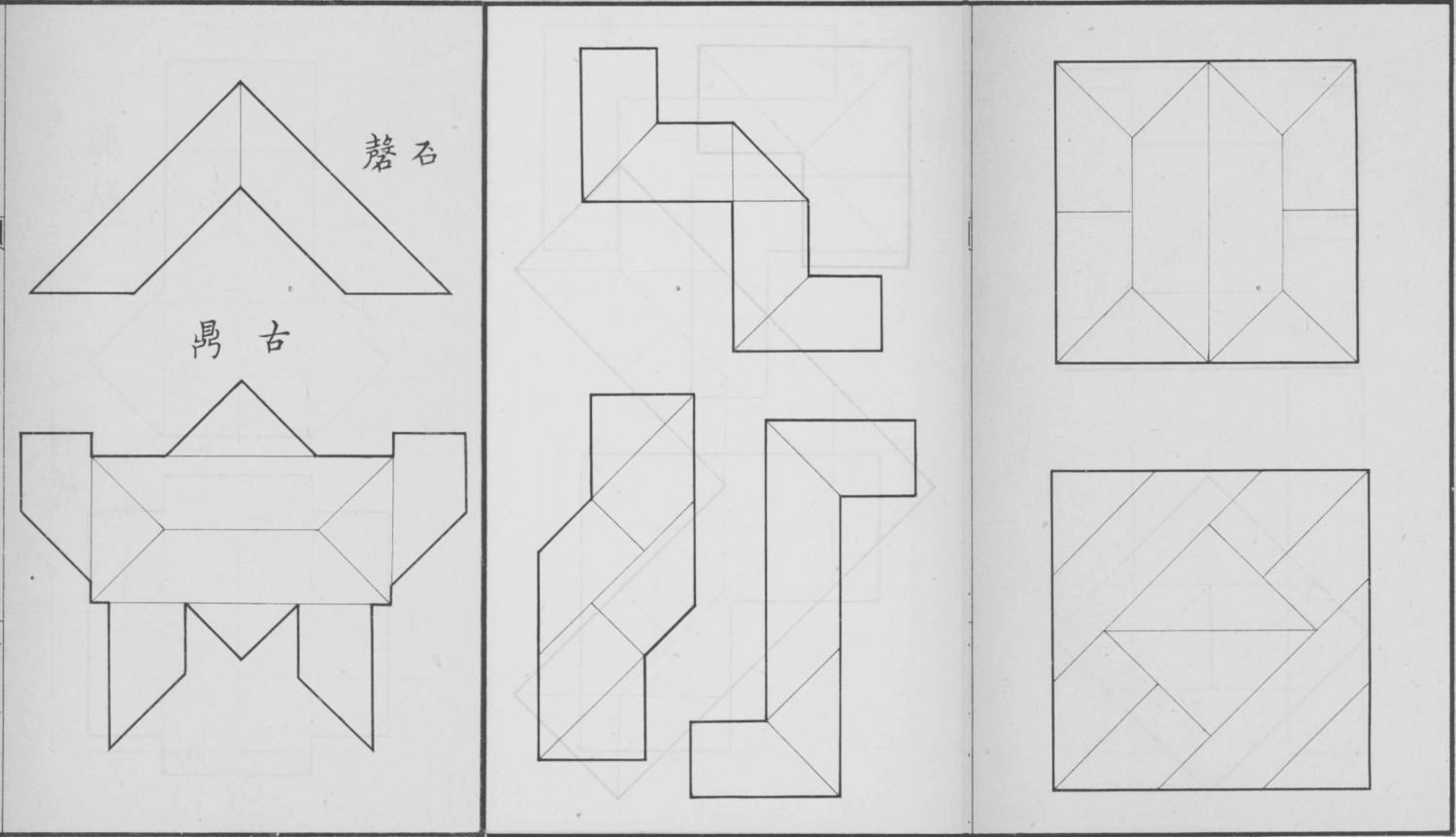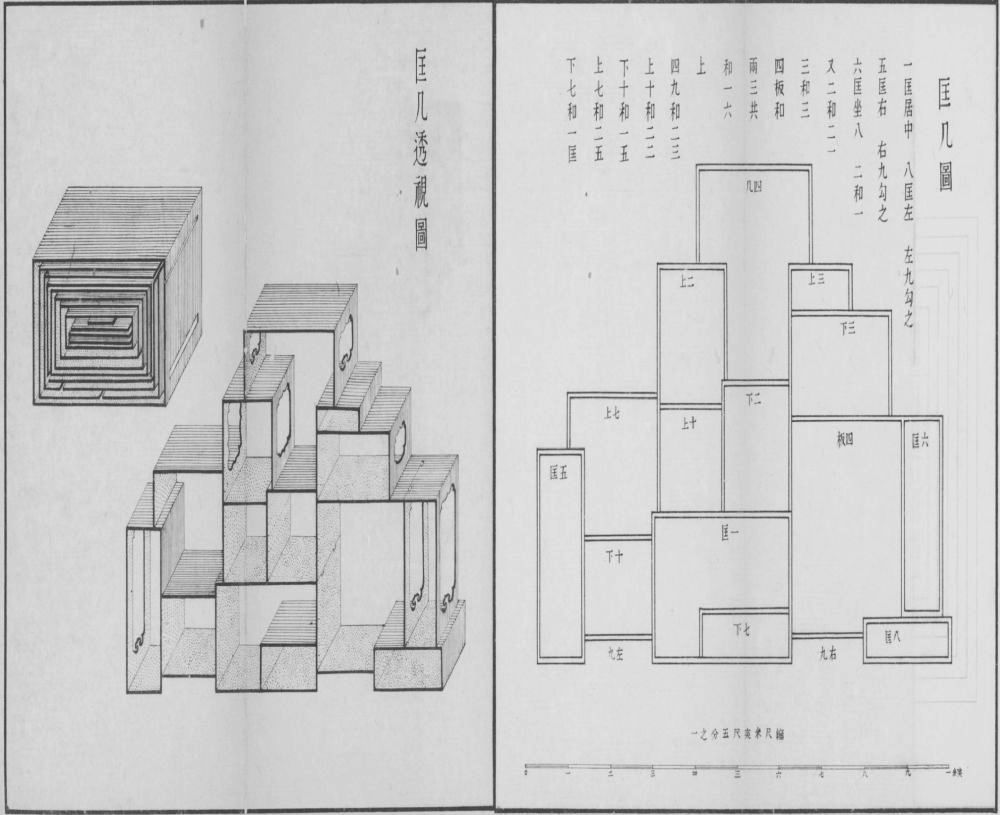Yanjitu 燕几圖 (sometimes erroneously written 燕幾圖) is a book on a kind of entertainment during banquets by which participants used small tables (ji 几) of different length and shape to create geometrical patterns. The method resembled somewhat the tangram game.
The author of the book is unknown, but ancient editions list Huang Bosi 黃伯思 (1079-1118), courtesy name Changrui 長睿 or Xiaobin 霄賓, style Yunlin zi 雲林子, from Shaowu 邵武, Fujian. His dates of life do not correspond with the preface, which says, the book was finished in 1194. This means that the real author was quite likely another person than Huang.
The game begins with two tables (ji'an 几案) with a length of 7 feet (chi 尺, see weights and measures), two with a length of 5.25 feet, and three with a length of 3.5 feet. The width (1.75 feet) and the height (2.8 feet) are identical. This set of six tables can be arranged into 20 different figures, which can in turn be transformed into 40 alternative figures. Participants are selected by throwing dice. In a second round, a seventh table is added. The "seven stars" (qixing 七星) can form 25 regular and 68 altered figures. The possible figures are shown in illustrations.
The book is found in the series Shuofu 說郛 (Wanwei Shantang 宛委山堂 edition), Chongding Xinshangbian 重訂欣賞編, Cunsutang jiaoxie jipu san zhong 存素堂校寫几譜三種 (together with Diejitu 蝶几圖 and Kuangjitu 匡几圖) and Congshu jicheng chubian 叢書集成初編.
 |
Combinations of seven small tables with three different shapes from the Yanjitu. |
 |
Geometrical and figural combinations of oblong and triangular tables from the Diejitu, left: a sound stone (qingshi 磬石) and a tripod (gu ding 古鼎). |
 |
Wooden boxes forming a kind of shelf for presenting objects (today called bogujia 博古架) from the Kuangjitu. Each box is described in detail. Not all boxes form a square, but some only consist of two or three sides or fragments of sides, thus representing pieces of a kind of puzzle. All parts can be stacked into the largest box. All images from the Cunsutang jiaoxie jipu san zhong, see Taiwan e Book 臺灣華文電子書庫. |
During the Ming period 明 (1368-1644), Yan Cheng 嚴澄 (1547-1625), courtesy name Daoche 道澈, style Tianchi 天池 or Geshan 戈汕, used the Yanjitu to evolve it into a game with some triangular tables which had the shape of "butterfly wings", thus the title Diejitu 蝶几圖 (originally written 蜨几圖). The book describes more than 100 figures that could be created, in arrangements of squares, lines, chevrons, rhombs and rings. The book is found in the series Shanju xiaowan 山居小玩 by Mao Jin 毛晉 (1599-1659), in the Qunfang qingwan 群芳清玩, and Cunsutang jiaoxie jipu san zhong.
A further emulation of the bidimensional tangram tables is the model of boxes or fragmentary boxes that are to be assembled into a kind of tridimensional bookshelf in the style of modern construction manuals for furniture. Each piece or fragment can be attached to the next one by an elaborated tongue-and-groove system. The author of the book Kuangjitu is unknown, but the preface of Zhu Qiqian 朱啟鈐 (1871-1964) to his collection Cunsutang jiaoxie jipu san zhong says, the illustrations present a shelf owned by Zhang Shucheng 張叔誠 from Tongzhou 通州 close to Beijing.